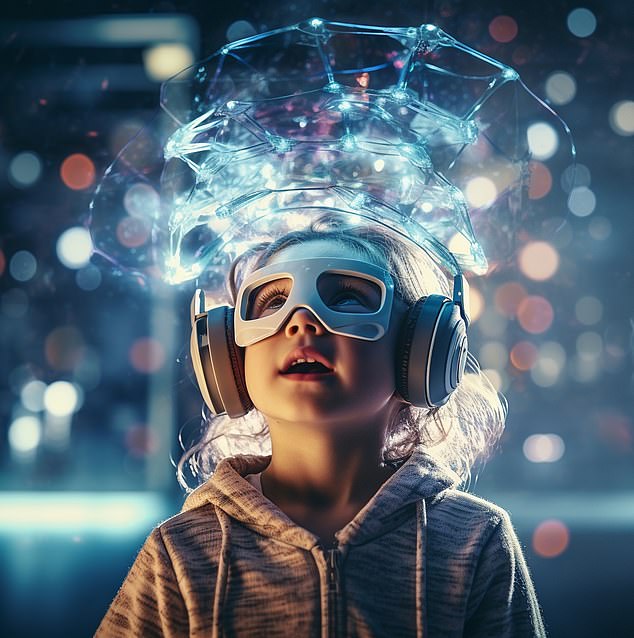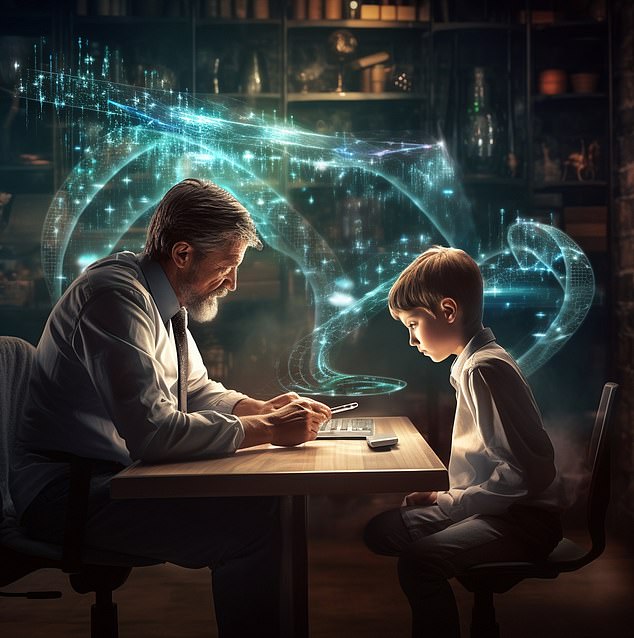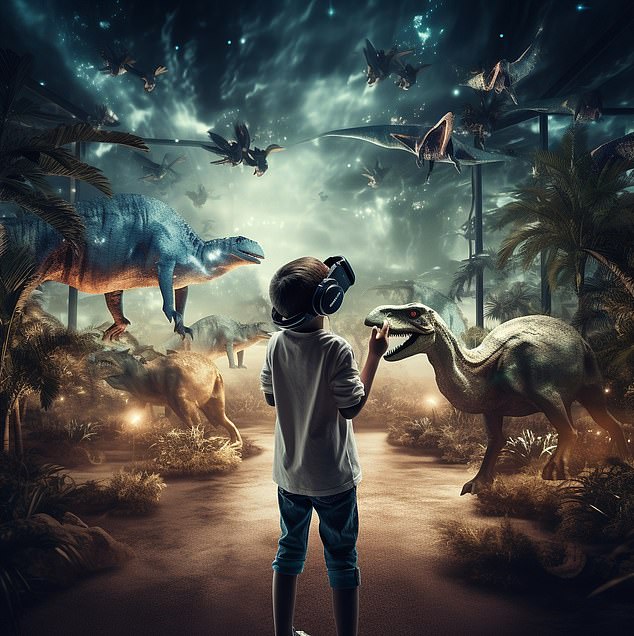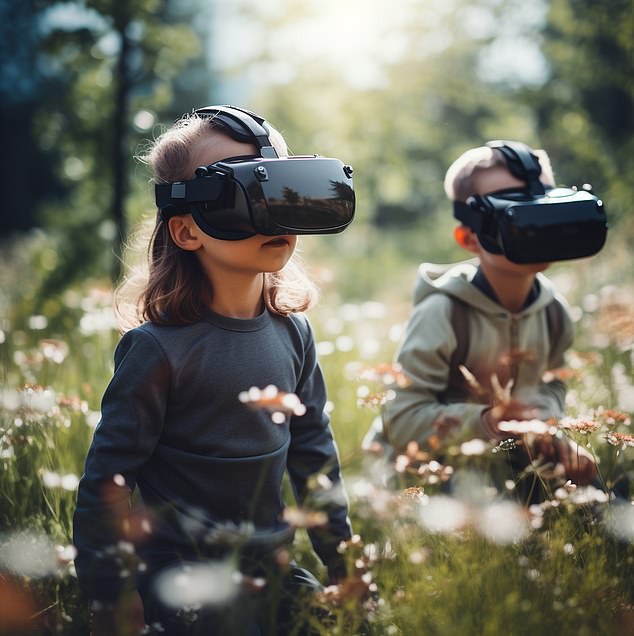EXCLUSIVE Former Google Futurist Predicts What Classrooms of the Future Will Look Like: They’ll Include Virtual Reality Lessons and Downloadable Knowledge
>
By 2050, students will download knowledge directly into their brains from AI tutors, without a human teacher present – and receive lessons tailored to their DNA, a futurist has predicted.
Virtual reality will be the main way of learning for many subjects, and the most important thing students will learn is how to work alongside artificial intelligence as a “co-bot,” says Tracey Follows, a futurist who has worked with clients like Google. , Virgin and Telefonica.
Follows, who has been named in Forbes as one of the world’s top female futurists, said even classrooms could become a thing of the past if students “self-teach” with the help of AI “tutors.”
Follows produced a white paper on the subject in collaboration with online tutoring service GoStudent and said that while her predictions may seem vague, they are “not science fiction.”
She told DailyMail.com that AI “teachers” will provide students with “a new perspective that we can merge with our own human perspectives.”
She predicts that new topics such as interstellar studies and biotechnology will become popular as humanity evolves into an interplanetary species.
The main topic will be how to work alongside AI
Children will learn how to work alongside AI systems and this will be their most important skill (Rob Waugh/Midjourney)
The most important skill students will learn in the future is how to work alongside AI as a kind of “co-bot,” Follows said.
She said: “I think the biggest skill will be working with AI, how to interact with AI, how to get what you want out of AI and how to adopt that, what recommendations AI could make to you.
‘Collaborating with machines will be the most important skill. It’s very underrated right now because people think they know how to do it, but they actually don’t.
Lessons are delivered directly to students’ brains

Learning will come directly into children’s brains through wearable devices or brain-computer interfaces (Rob Waugh/Midjourney)
By 2050, students could learn simply by “plugging in” to a computing device, Follows says.
She said: ‘The work currently underway with the brain computer interface is much more advanced than the public realises.
‘In China you already have neurotechnology that reads brainwave data, embedded in the caps of, you know, miners, construction workers, machinists, etc.
‘I’ve spoken to the founders of many companies making this technology and they believe it will be embedded in everything from our headphones, to our bicycle helmets, to some of the systems we may use.
“Why shouldn’t it be used in the classroom or outside?”
The lessons are personalized based on the students’ DNA

Lessons are personalized for each student using their DNA (Rob Waugh/Midjourney)
In 2050, parents may be able to have their children’s DNA tested to see whether they are better at certain subjects – and receive a personal lesson plan based on that.
Governments could intervene to force children to do the subjects they were “born to be good at,” Follows said.
By 2050, our understanding of genetics will be such that students can receive lessons tailored to their DNA.
‘If you find out that your child has a genetic predisposition for something, you might say: well, actually, then we want to build an education plan around that.
“Or the state could step in and say we want the most productive, most economically strong workforce – and if they understand what skills the child is inclined to, to at least try to work one of those skills into your personal curriculum .’
Virtual reality will be the main way of learning

Virtual reality will become an important teaching method (Rob Waugh/Midjourney)
Many classes will be taught in virtual reality, from lessons about the dinosaurs to entering human bodies for anatomy lessons, Follows said.
For some subjects, VR will be the primary way of learning, she thinks.
Followers pointed out that VR is already being used to train nurses and paramedics – and by 2050, children will expect to be taught in virtual worlds.
She said: “We have a generation of children growing up who are already learning many things, in different environments through virtual gaming and virtual worlds.
‘If they suddenly go to school or want to learn subjects or new skills. They take that with them. So there will be an expectation of a generation that they will learn in simulated virtual worlds.
AI teachers – and not classrooms

Who needs a classroom? (Rob Waugh/Middle Journey)
The school of the future may not have physical classrooms, with students choosing to “self-teach” with the help of personalized AI teachers, Follows believes.
She said: “We see it through people listening to podcasts, we see it through people watching How to videos on YouTube.
‘Ten or twenty years from now we will be using personalized AI to learn the person or topics that we are most interested in, or that can most help us advance in our chosen area of interest or, or in work or whatever .
‘Then why should you be in a physical classroom? These digital technologies decentralize everything, meaning that in the future, education will be seen much more as a networked activity than as a physical place.”
